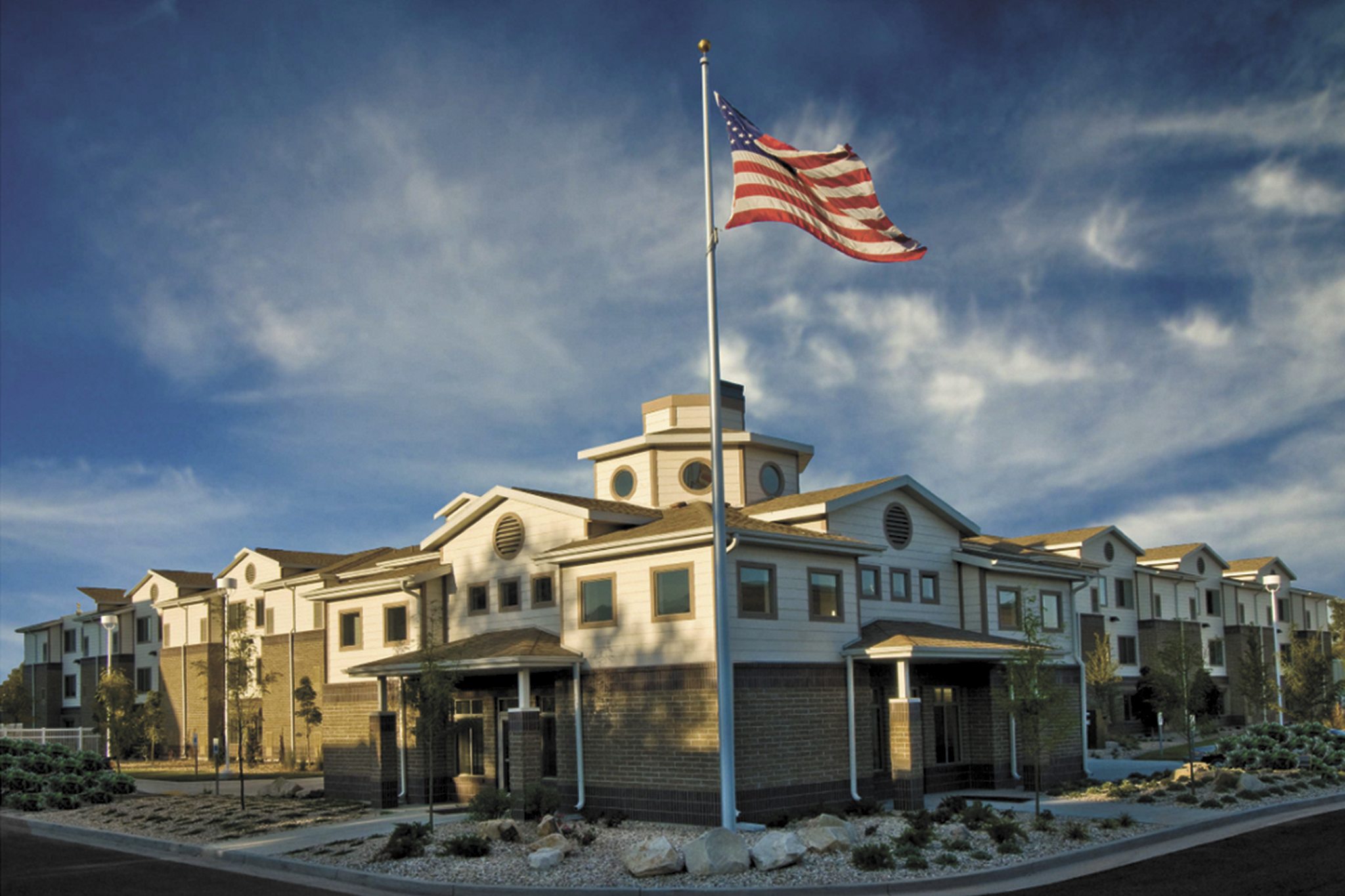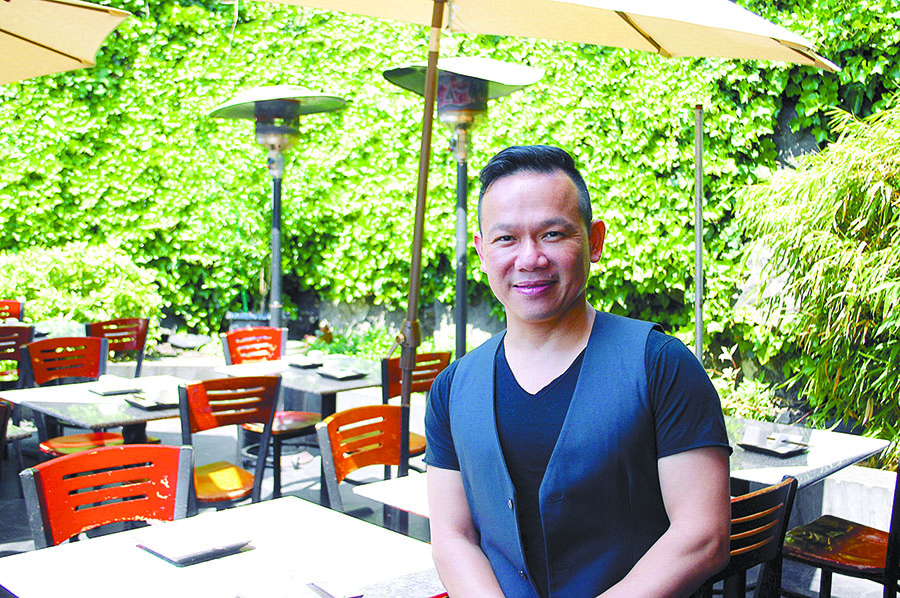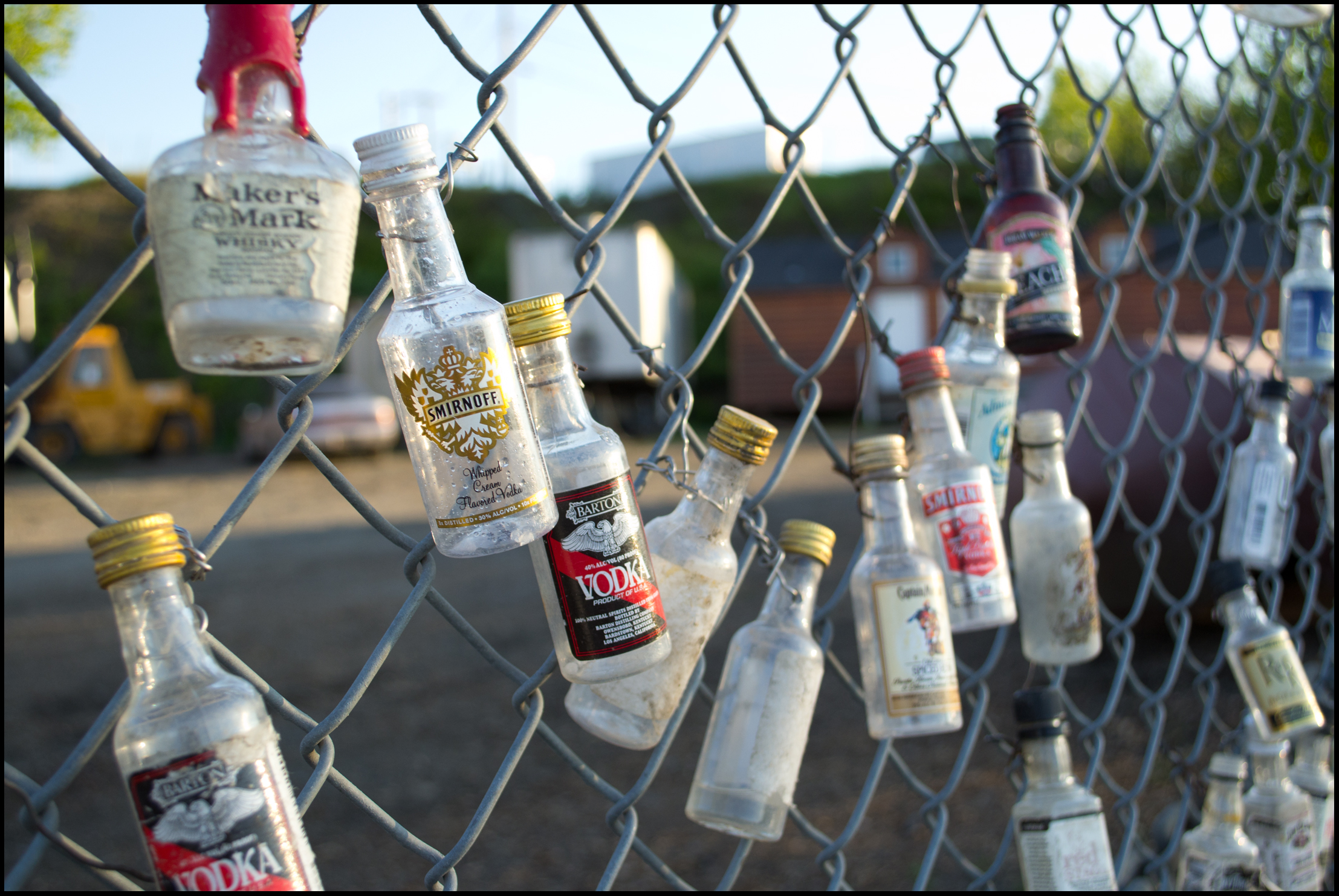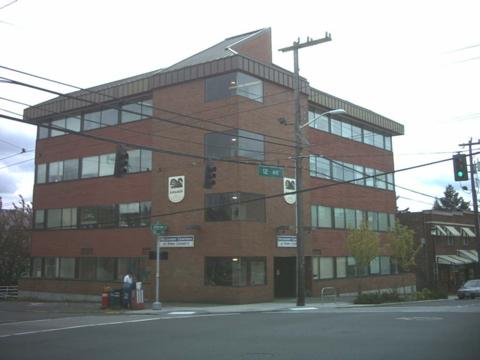Snoqualmie: A Tale of Two Towns
Bicycle bells and birdsong, sun-dappled lawns green as newly minted fairways. Stroller moms in black yoga pants running in place in front of Brunello Ristorante, where kids eat free on Sundays. Here, up high on self-contained, rigorously planned Snoqualmie Ridge, the curvy streets named after old pioneers lead to shiny, handsome homes, most of them elegantly encircled by Sherwin Williams–stained fences and weedless parking strips smartly dressed with red maple, yellow wood, and flowering pear trees.
Even the April breeze seems arranged, like the soft northwesterly that on this twinkly, bright early-spring morning chaperones white cumulus clouds across the craggy granite peaks of Mount Si and causes blue pennants advertising Pulte Homes at the EaglePointe subdivision (nearly sold out) to flutter like beating wings on Jacobia Street—the entry point, off Snoqualmie Parkway, to the site of dozens of new two-story cottages, colonials, and Craftsmans that have nearly filled 1,342 acres on this blunt western edge of the Cascade Mountains.
It brings to mind the phrase Jonathan Franzen chose to depict the fictional Midwest suburb of St. Jude in his 2001 novel The
Corrections: “a miracle of niceness.” Nothing is out of place. Dog owners converging on the manicured expanses that wrap around the new Snoqualmie Community Center dare not leave home without their pooper-scoopers. There are rules, many rules, that the residents, who pay an annual $300 assessment fee, must abide by. One cannot, for example, paint a deck without submitting to the Snoqualmie Ridge Residential Owners Association (ROA) a “home modification application.” Garage sales are verboten.
A city worker in a Bobcat empties the trash bins each and every morning along well-ordered Center Boulevard. Here, in “new Snoqualmie” ’s commerce sector, wood and stone buildings trimmed in muted colors—avocado, lime, mauve, and tan—house six ethnic eateries, a bistro and a deli, three family medical and dental clinics, four fitness salons, and a hot yoga studio, wonderfully named Twisted Bliss. At night, 30-something couples, many of them with the means to hire workday nannies, often crowd Ana’s Mexican restaurant, lured by bulging burritos and Ana’s house special: generously poured margaritas with fresh-squeezed lime juice and premium tequila.
“You can live on the Ridge, and it’s all there, so you never even have to see the old town of Snoqualmie,” says Carol Ladwig, editor of the weekly Snoqualmie Valley Record.
Left: Woodman Lodge, a “ridgies” restaurant. Right: Smokey Joe’s Tavern, a “townies” hangout.
By mid-morning, “The Ridge,” as it is known, empties and grows quiet. Stay-at-home-moms, for the most part, dominate, and, with kiddies in tow, pack the two main coffee houses, SnoValley Coffee Co., and Starbucks, where children’s games and puzzles are at the ready. By 9 a.m., Microsoft’s Connector buses have done their job, whisking workers away to the company’s Redmond campus. Amazon is also an employee magnet, along with other high-tech concerns. Snoqualmie Parkway is almost always clogged with westbound motorists, and backups at the Highway 18/Snoqualmie Falls exit, the main route to access the Ridge, can reach two miles or more during the evening commute. Some 42 percent of Snoqualmie’s residents work outside town, according to city statistics. More than one-third of the families have children under 18. The average household income is $135,000; 24 percent of the Ridge population has graduate degrees; 9 percent possess Ph.D.’s.
Though the Ridge homes—average price about $575,000, according to the ROA—are relatively close together (6 to 16 units per acre), and while residents share the commonality of jobs in the high-tech industry, people simply don’t know, or care to know, their neighbors, says Snoqualmie Police Chief Steve McCulley. An imposing, barrel-chested man with a neck that could rival any NFL linebacker’s, McCulley has lived in his Upper Snoqualmie Valley haunt for 20 years and boasts that Snoqualmie is the third safest city in the state, behind only Duvall and Sammamish.
“We don’t have much crime at all, but we do get lots of barking-dog calls, and we’ll say, ‘Did you ever go over and talk to your neighbor about it?’ I mean, they’ve been there 10 years, and I’m thinking, ‘Go deal with it yourself.’ ”
Wendy Thomas: “It was like an arranged marriage”
Not a soul lived on “The Ridge” before the first families (and first houses) took root in 1998. Today, 11,100 “ridgies”—as they have not-so-affectionately been dubbed by residents of the more modest low-lying part of town—occupy 3,500 homes, with 500 more in the pipeline. “It’s like being a tourist in your own town,” says Ladwig.
When the last homes go up, probably within the next year or so, it will complete what the Weyerhaeuser Company, the world’s largest private lumber producer, began when it decided to get into the real-estate business nearly two decades ago: a $1 billion residential community, one of the largest of its kind in the U.S. In 2010, when the siege was running full-tilt, Snoqualmie was the fastest-growing city in all of Washington.
Imagine living in old historic Snoqualmie—home for decades to a mere 1,600 so-called “townies”—and coming to the startling realization that 85 percent of the city’s population all arrived in the past 17 years, and that they all live on a hilly ridge, a swath of just over two square miles, once devoted to Douglas fir?
“It’s been like an arranged marriage, with no divorce,” says Wendy Thomas, who bought the hardware store in old town 13 years ago. “And it was a marriage of two very different kinds of folks: those who made a living here working in the woods or at the mill years ago, and the newcomers—you know, the technical workers, better educated and so on.”
As Snoqualmie’s longtime Mayor Matt Larson, a tall lean man with a shy aw-shucks smile, puts it, “It has been a fascinating social experiment, all right. Sometimes I feel like I’m mayor of two cities, and since I live on the Ridge—we bought the 114th lot way back when—most people down here [in old town] don’t trust me as far as they can throw me.”
The social experiment has worked out just fine for Carly Eklund. She and her husband Tim managed to seize their slice of heaven almost two years ago. “We love it here. We were able to get a lot more house for the money,” she says. She and Tim, a tech worker at a chemical-distribution company in Redmond, thrilled to bid farewell to their one-bedroom condo in Issaquah, found themselves a 2,400-square-foot, three-bedroom abode near the Jack Nicklaus–designed golf course.
“It’s so safe here, so nice and beautiful, with all the hiking trails and parks,” she continues, pushing her 2-year-old son, Carter, on the playground swing at Jeanne Hansen Community Park—recently christened in honor of the late former mayor who led Snoqualmie through a contentious time, 1987–97, helping the then-decaying former mill and logging town evolve into a booming community with the approval of Weyerhaeuser’s master-planned Snoqualmie Ridge development.
But, some wonder, at what price? As one retiree shooting eight-ball with a buddy one recent late afternoon at century-old Smokey Joe’s Tavern in the heart of old-town Snoqualmie explains, “It was too much, too soon for us to get used to. All them people came too quick.”
Few places offer such a stark contrast, with such disparate economic, cultural, and visual realities, as the two distinctly different communities that somehow make up one city. The old town is located three miles down Snoqualmie Parkway from the Ridge. It may as well be 3,000.
In fact, so striking is the dichotomy that Snoqualmie city officials are careful never to refer to the annexed wooded land as the Ridge or the historic village, incorporated in 1903, as “old” Snoqualmie. “We are one city, even if it doesn’t seem that way,” says longtime council member Charles Peterson.
What has transpired in Snoqualmie is in some ways reminiscent of the dramatic metamorphosis of Seattle’s South Lake Union over the past several years. Many in Seattle embraced it as a welcome change, a high-density nirvana, while others took a far more jaundiced view (and continue to do so), arguing that the furiously paced development and the onslaught of badge-toting Amazonians—“the nerd herd,” as longtime SLU stalwarts derisively termed them—hijacked the neighborhood’s soul and robbed it of its character, history, identity.
Mayor Larson sees a parallel to an earlier era. “What happened here was really similar to the anti-California backlash that Seattle saw back in the mid- and late ’80s,” he says. “And I’m not sure everyone has gotten over it yet.”
Traci Smith, a bookstore clerk at the Northwest Railway Museum in the older part of Snoqualmie, says the bitter divisions and resentments that once dominated Snoqualmie have quieted some. “But there’s still a real disconnect. I mean, we used to be a small town, and then it changed so fast, so dramatically. Everyone is trying to make it work, but there’s still some anger and frustration.”
The rapid growth put a severe strain on the Snoqualmie Valley School District, recalls retired assistant superintendent Don McConkey. “It was a real challenge to meet capacity, and when we drew the boundaries on who would stay at the Ridge and who would have to be bused to [the high school] in North Bend, that didn’t go over well.”
No question, many folks, most of them residing in lower Snoqualmie, haven’t adjusted well to the rapid incursion of newcomers. They feel outnumbered, overpowered, and generally resentful of the more well-to-do families who have settled here. “There are some old-timers who still won’t drive down the Parkway because they don’t want to look at it,” says Anna Sotelo, who owns the Mexican restaurant. “I know people who will take the long way around by going to the next exit up [off Interstate 90 heading east] so they can drive into town from North Bend.”
Some old Snoqualmie lifers still haven’t gotten over the city’s decision some years back to move the fire station and police headquarters to the Ridge, or the new $4 million library, financed by a $172 million bond passed by voters in 2004. Many in old Snoqualmie were plenty steamed that it replaced a branch in their part of town.
In 2007, then again in 2011,when a $56.2-million school bond issue went down to defeat, plans to build a second high school and a sixth elementary school failed to gain the necessary 60 percent supermajority, largely because suspicious old Snoqualmie voters felt the new schools would benefit only Ridge residents. (In February residents finally did pass a $244 million school bond, which will pay for a new elementary school on the Ridge and to modernize and expand Mount Si High School, which will remain tethered, much to the relief of many veteran residents, in old Snoqualmie.)
Over coffee at Starbucks, Dave Battey, the town’s unofficial historian, muses, “I think there will always be an undercurrent of ‘us’ versus ‘them.’ ” A member of the city’s planning commission during the great Ridge development debate in the late ’80s and early ’90s, Battey adds, “One of the reasons we decided to name the streets after old-time residents was to try and mitigate that us-versus-them feeling that they had.” It was also a key factor in locating the modern, airy $7 million City Hall, completed in 2009, in the older section of town.
No one doubts that both parts of town have benefited from the Ridge development, with new parks and trails, badly needed repairs to the decaying underground pipes in the old town, a new $20 million wastewater-treatment plant, and expanded police and fire services. In the past 15 years, the total assessed valuation of Snoqualmie has rocketed from nearly $300 million to $2 billion.
Says Chief McCulley: “It really has been a tale of two cities.”
“I was born in a town that no longer exists.”
Harold Erland: “You know, you get on board with change, or you fight it and be miserable.”
So Harold Erland begins on this late March morning after hobbling on two surgically repaired knees into a small cluttered office he occupies next to North Bend Community Church, where he runs Compassion Ministries. “Yes, it was called Snoqualmie Falls. It’s all gone now,” he says as the front-door window pane tinkles with raindrops and a cold gust tears at what’s left of the cherry blossoms on East Third Street.
Lost in reverie, Erland, 71, goes on, despite the sporadic interruptions of old-timers who come by to say hello after finishing the hot meal the church provides for free each Wednesday. “Why, it was the largest town in the Snoqualmie Valley. Imagine. Once this was a place of dairy farms and loggers. My father was in the Army Air Corps during World War II. He was in the Marshall Islands. And he came home and he was a dairy farmer, and then he worked at the mill in Snoqualmie Falls for 40 years. My great-great-grandmother came here from Indiana in a covered wagon.”
Snoqualmie Falls, born in 1917, was a company town. It belonged to Weyerhaeuser, which built for its loggers and millworkers 250 houses, a community hall, ball fields, a barbershop, a school, a post office, and a Japanese bunkhouse, located a fair distance from the Caucasian dwellings. “We even had a hospital,” Erland marvels. “I was born in it.”
The workers’ village was hailed by Weyerhaeuser as a “social experiment,” a sustainable community that would become a “permanent” home, wrote Don Fels in a 2010 article for the Snoqualmie Valley Historical Museum. In the late 1950s, the forests tamed and no longer offering an adequate harvest of Douglas fir, Snoqualmie Falls was abandoned. Turned out there was nothing permanent about it. Some homes were sold off to workers, but most were dismantled or moved to nearby Snoqualmie. The town that had been billed as a “planned community” disappeared.
Decades later, though, “planned community” was the precise term the lumber company used to promote Snoqualmie Ridge in 1987. Rather than fight county zoning regulations or wait 30 to 50 years for a new crop of Douglas fir saplings to mature, the company asked the depressed and desperate timber town of Snoqualmie to annex the underdeveloped ridge land and approve its plan to build thousands of new homes.
“We were in dire straits,” recalls Mayor Larson. “The mill was gone. Our infrastructure was falling apart. There were more stringent laws on water and land use, and there was a halt on dredging, and so there was even more flooding. This [the Ridge development project] was about economic survival.”
Erland, an electrician at Puget Sound Electric for most of his working career, recalls the fierce debate that radiated through the community. “It was a battle. People were really split,” he says. “Most of the anti-growth people were in North Bend. We are connected here, and a lot of people just didn’t want to see the valley grow.”
He goes on. “But yeah, it was a dramatic change. A lot of them [the newcomers] came without community ties. They were more education, more white-collar. Before, people just lived and worked here. Now they just sleep here. But that anger is pretty much dissipating now. The older generation is dying off. You know, you get on board with change, or you fight it and be miserable.”
Sandy Conway, secretary for Compassion Ministries in North Bend, is not altogether on board. Her perspective is harsher: “They came in and thought they could push people around. It was obvious they looked down upon us, they with their $500,000 homes and we’re in our own $100,000 homes at the time.”
During the mid-2000s, when droves were settling upon the Ridge, things were far more fraught with jealousy, resentment, and downright anger, most of it emanating from longtime residents. Remembers Soleto, owner of the Mexican restaurant: “In the early days, it was like, ‘We hate the Ridge. They messed everything up.’ The locals still say that, but it’s not as out in the open as much now. People have worked it out. It’s no longer the hicks versus the socials like it was. The kids got through it, but it has taken the parents a whole lot longer.”
The old town hugs the icy, flood-prone Snoqualmie River. A mile away, the famous waterfall crashes down 268 feet over granite cliffs. One of the state’s most popular tourist destinations, it’s perhaps best known to the world for its appearance in the cult television series Twin Peaks. A Salish word meaning moon, Snoqualmie is scattered for the most part along Railroad Avenue, where rusting rail cars languish on tracks that face old and worn, though quaint, business establishments.
The town is undergoing a significant makeover. The downtown block’s Railroad Avenue parking area has been replaced by a construction zone, with occasional one-lane shutdowns and delays as workers install underground power lines and new curbs, gutters, and sidewalks, as well as a boardwalk promenade that will include a kiosk explaining the city’s history. Downtown merchants are feeling the pinch from work that began last year and will continue well into summer. But few are complaining. They realize the town needs a serious facelift, and hope the new amenities will draw visitors.
“It’s not just people on the Ridge who might not come here all that frequently, but there are a lot of people who came to the falls and don’t even know we exist,” says Wendy Thomas, owner of Carmichael’s True Value Hardware. Sipping a cup of chamomile tea at the Black Dog restaurant, she adds, “People who visit Snoqualmie Falls ask, ‘Is there really a town called Snoqualmie?’ It’s like we are a mythic town in the mist.”
Thomas, a spry 51-year-old who faintly resembles Lily Tomlin, grew up in Bellevue, worked for a time on a fish-processing boat in southeast Alaska, and then got into the lumber business. She moved to North Bend, two miles from town, in 1991. Gazing across the room, her fingers forming a steeple, Thomas reflects on what the Ridge development has meant to Snoqualmie. “It really has been a fascinating and dynamic social experiment,” she says. “And now we’ve come to this place where people have had to adjust on both sides. And that’s still hard for some people. Everyone wants to move to a community and then close the gate behind them when they get there. They don’t want this ideal they had for the place spoiled.
“But people are finally getting used to it—kind of like you get used to an arranged marriage.”
econklin@seattleweekly.com








